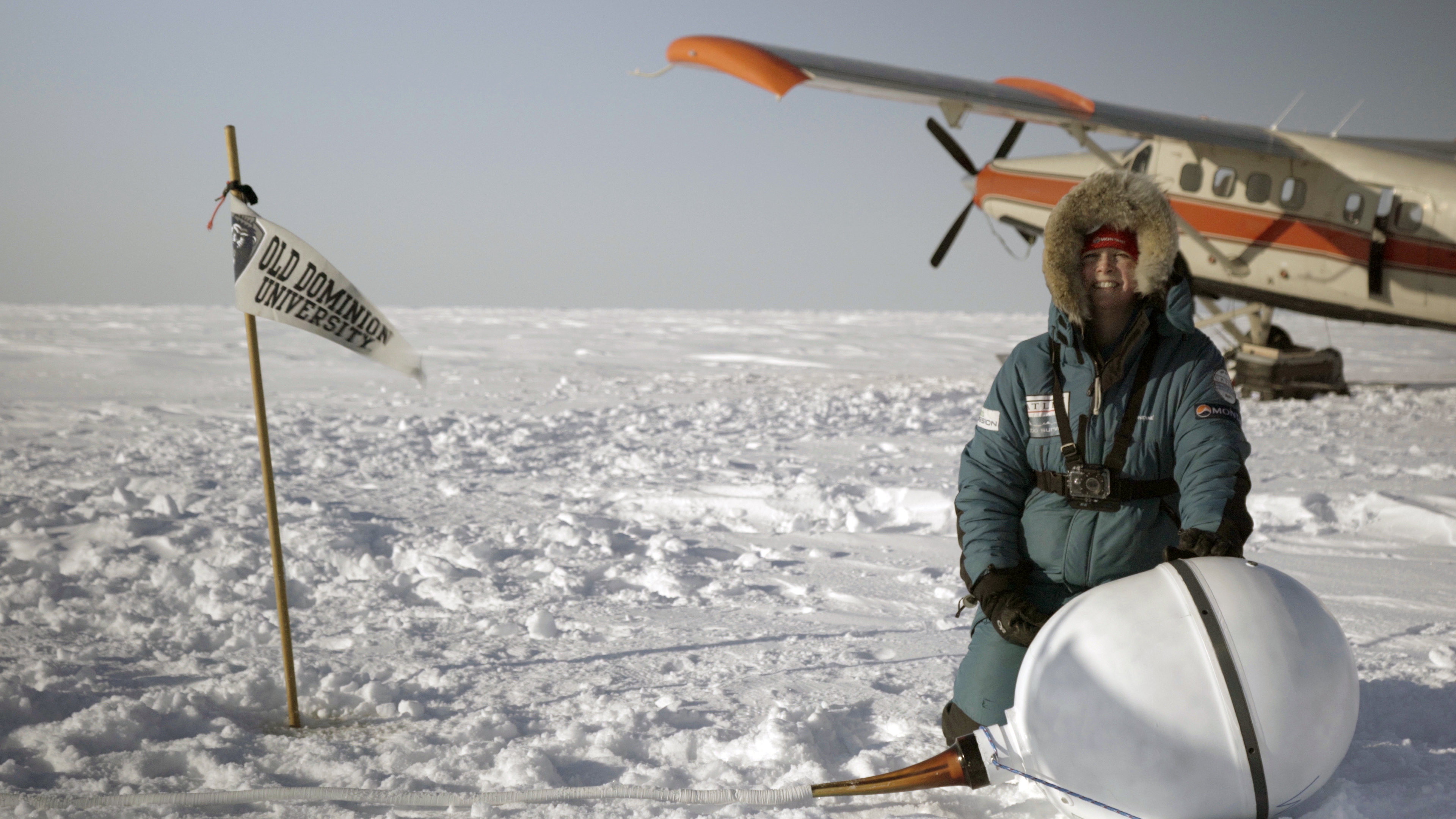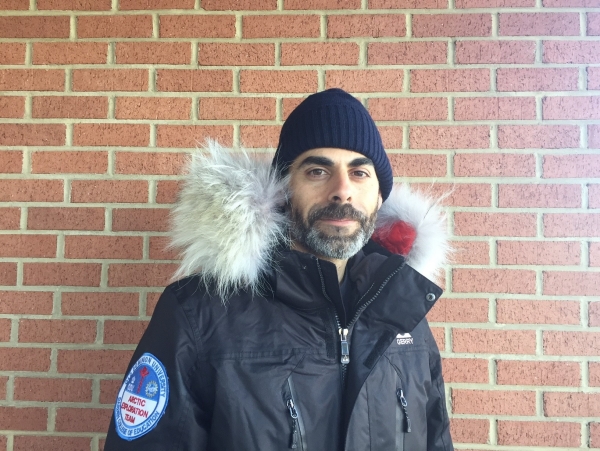ODU Colleges Prepare to Collaborate on Second Arctic Research Expedition
January 17, 2018
 ODU researchers, Victoria Hill and Petros Katsioloudis deploy buoys and sensors to take precise measurements from the frozen Arctic Ocean.
ODU researchers, Victoria Hill and Petros Katsioloudis deploy buoys and sensors to take precise measurements from the frozen Arctic Ocean.
 Petros Katsioloudis
Petros Katsioloudis
 Victoria Hill
Victoria Hill
By Roger Njunge
About a year after a successful National Science Foundation-funded trip last spring, Victoria Hill, of Old Dominion University's College of Sciences, and Petros Katsioloudis, from the Darden College of Education, are coming together once again to brave the cold Arctic to study climate change.
Their research is key to gaining understanding about the decrease of ice coverage in the Arctic and the effect on our world.
During their first research trip to Prudhoe Bay, Alaska, one may have thought Katsioloudis would have been out of his element as he accompanied Hill for, as he puts it, "the College of Education is not used to this kind of data."
As chair of the Department of STEM and Professional Studies at Old Dominion, and program leader for Industrial Technology, Katsioloudis was well prepared, and a great asset. Katsioloudis lent his technical expertise in designing and precision manufacturing the sensors Hill used to collect data.
The sensors cost $800 each when purchased commercially. However, Katsioloudis, with help from post doctorate student Anthony Asmar on electronics; and College of Education instructor Basim Matrood, on design and mechatronics, was successful in bringing down the cost to roughly $40 per cell. As Katsioloudis explained, "we bring in the technical expertise that makes it possible for scientists like Hill to collect data."
Hill, an oceanographer in the College of Sciences, with seven trips to the Arctic under her belt, felt at home during the past expedition. As principal investigator, her task was to decide on sensor deployment locations, and analyze data collected.
Katsioloudis' sensors were attached to ice tethered buoys, nicknamed WARM buoys for Warming and irradiance Measurements. Once attached, the sensors were submerged in the ocean beneath the Arctic ice pack.
The buoy remained attached to the ice throughout the spring, collecting important data during the hard to observe ice melting period. Once the buoy melts out of the ice into open water it travels with the ocean currents throughout the summer. A GPS and satellite uplink allows Hill to monitor the buoy and receive data from the sensors.
The WARM buoys currently in the Arctic report data hourly on water temperature, salinity, light penetration and phytoplankton biomass. Unfortunately, the buoys can only survive the harsh conditions of the Arctic Ocean for a year.
Hill and Katsioloudis are due for another expedition in 2018 where they will replace the expired buoys and be able to deploy more due to the less expensive cost of each device.
Another successful expedition will provide invaluable data to the scientific community. The thinning of ice over the Arctic Ocean results in an increase in solar penetration. Deploying these new and improved devices will provide more insight into processes such as photochemistry, primary production and the warming of water along with a greater understanding of the processes involved with climate change.

